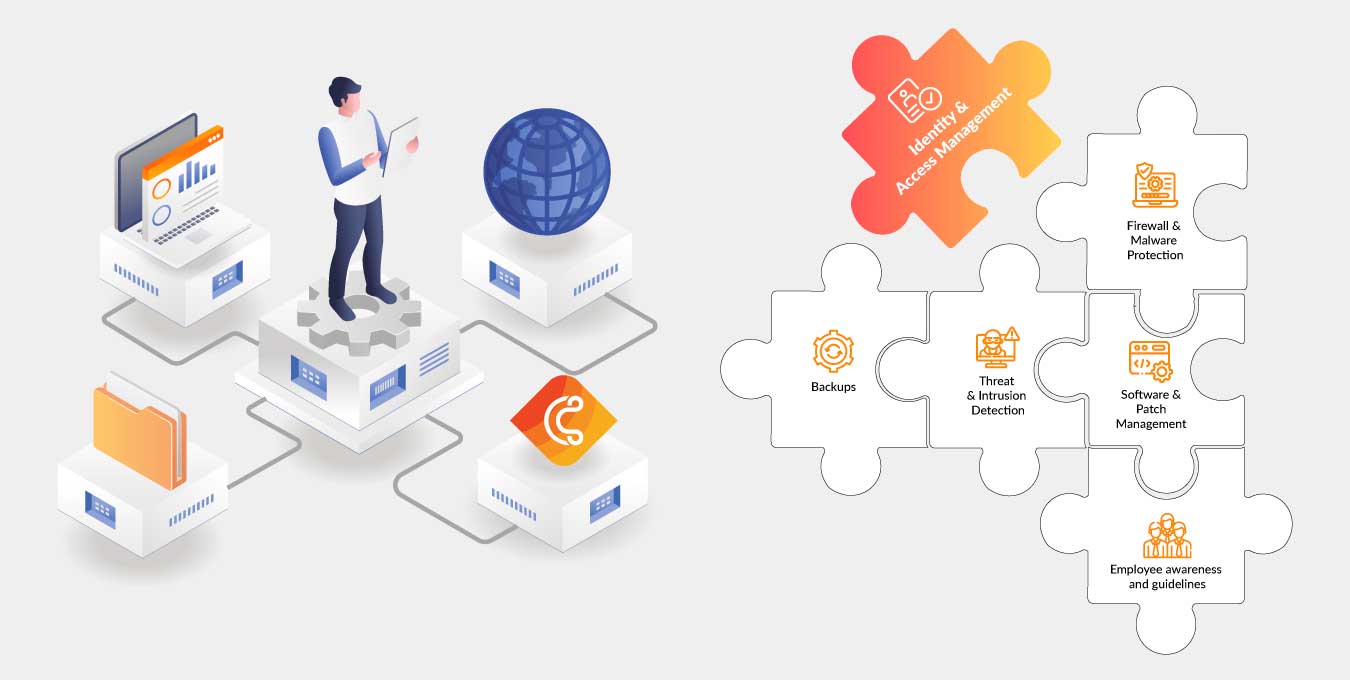
Identity & Access Management as a core building block of cyber insurance: Detecting cyber attacks
Why it is important to detect cyber attacks (early)?
It is critical to detect cyber attacks early as this has a direct impact on the security and integrity of data, systems, and networks. On the one hand, this is about minimizing damage – since early detection enables a quick reaction and containment of attacks. This can minimize potential damage and limit the impact. The faster an attack is detected, the easier it is to prevent data from being stolen, deleted, or encrypted. On the other hand, early detection and a quick response can also prevent business interruptions. But beyond that, early detection and a quick response are important to show customers, partners and the public that IT security in the company and the protection of customer and partner data are taken seriously. Thus, the (early) detection of cyber attacks also has an impact on the company’s reputation. In addition, early detection of cyber attacks is also required in the context of forensic investigations, e.g., to preserve important evidence and identify attackers, as well as for regulatory compliance, e.g., data breach and cyber-attack notification.
In summary, early detection of cyber attacks helps ensure security, data and system protection, and business continuity. It is an essential component of a comprehensive security strategy and helps organizations proactively respond to threats before they escalate into serious security incidents. Therefore, cyber insurance companies often require extensive IT security monitoring to reduce the damage and risk of a cyber attack.
Identity & Access Management as an important component in monitoring
Since compromised user accounts are one of the most important attack vectors in cyber attacks, it is important to include information and events from Identity & Access Management in the monitoring. An Identity & Access Management (IAM) system can provide valuable information for IT security monitoring because it centralizes the management of user identities, access rights and authentication processes.
Organizations use various methods and technologies to monitor their IT security for potential cyber attacks. Buzzwords such as Security Information and Event Management (SIEM), Security Orchestration & Automated Response (SOAR), Extended Detection and Response (XDR) and many more are often used. Essentially, however, the monitoring of cyber attacks is about monitoring the various systems and also the interaction of the entire IT infrastructure in order to identify suspicious behavior and then react to it as quickly as possible. Therefore, collecting and aggregating data across the IT landscape, as well as deriving possible responses to a wide variety of incidents, is critical.
Now the question arises: what information can Identity & Access Management provide for IT security monitoring?
- User activities and accesses: IAM systems can provide detailed insights into user activity, including logging on to systems and accessing resources. This makes it possible to detect suspicious or unusual activities that could indicate unauthorized access or attempted attacks.
- Authentication: Identity & Access Management is responsible for user authentication. By analyzing authentication information, such as authentication method usage, multifactor authentication, and more, suspicious login attempts, or brute-force attacks can be detected and prevented.
- Permissions and access rights: IAM systems define and manage user access rights to resources, applications, and data. By monitoring these permissions, potential over-privileging or unauthorized access can be detected.
- User account changes: Identity & Access Management logs changes to user accounts, such as adding or removing users, changing permissions or user data, and password resets. This information is important to detect unauthorized changes that could indicate a possible attack.
By integrating information from the IAM system with IT security monitoring, the security team gains a holistic view of user activity and access patterns across the enterprise. This makes it possible to detect suspicious or abnormal activities early and take effective security measures to prevent or contain cyber attacks.
It is important to get the information best in real time, event-based integrations are therefore preferable. In cidaas, so-called webhooks are available for this purpose, via which events that occur in cidaas, e.g., the creation or modification of a user, can be sent to the monitoring in real time. Identity & access management is therefore not only important for actively preventing and containing cyber-attacks, e.g., through multifactor authentication or end-to-end authorization management, but also provides a lot of insight and information for IT security monitoring. Identity & Access Management thus not only directly meets the requirements of cyber insurance, but also supports the implementation of requirements such as IT security monitoring.
On our landing page – Identity & Access Management for cyber insurance – you can learn more about how cidaas can help with the implementation of cyber insurance requirements.
Also read our other blog parts on the subject of “Identity & Access Management as a core building block of cyber insurance”:
- Identity & Access Management as a core building block of cyber insurance: multi-factor-authentication
- Identity & Access Management as a core building block of Cyber Insurance: Authorization Management
- Identity & Access Management as a core building block of cyber insurance: reporting and recertification
